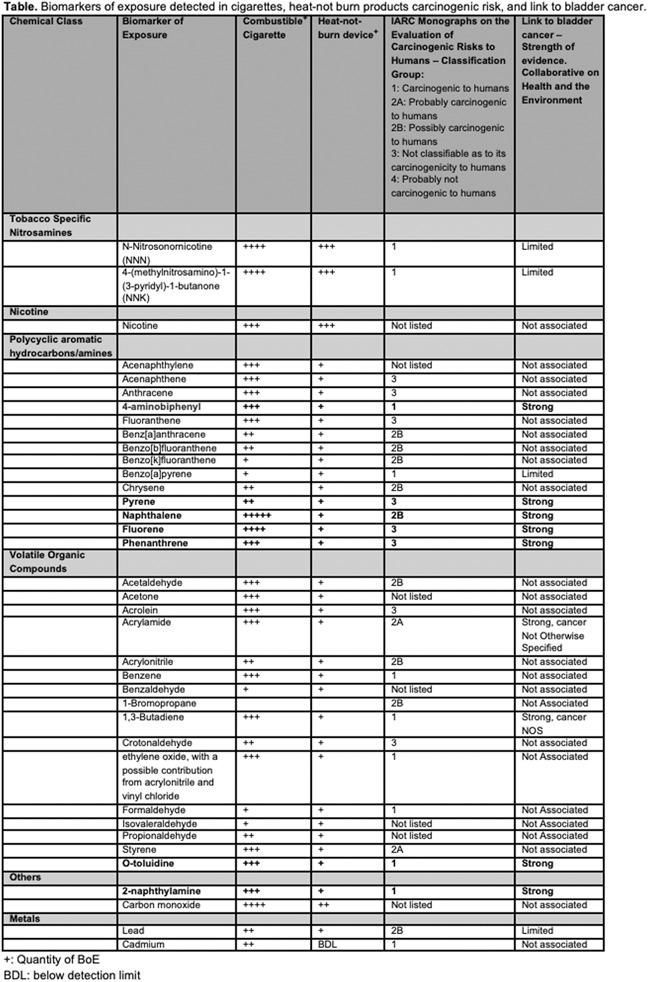Introduction and objective
Heat-Not-Burn (HNB) devices are FDA approved as alternatives to combustible cigarettes as they either heat a nicotine-free liquid which then passes through tobacco, or directly heats tobacco to less than 350°C, and therefore do not combust. Specifically, IQOS (I-Quit-Ordinary-Smoking)(Phillip Morris International) is a device marketed to significantly reduce the production of harmful and potentially harmful chemicals compared to combustible cigarettes. These products, which are unfamiliar to most urologists, may produce bladder cancer-linked carcinogenic biomarkers of exposure (BoE) during smoking similar to combustible cigarettes. We reviewed the literature to assess bladder cancer-related toxicant and carcinogen exposures from HNB devices compared to combustible cigarettes.
Methods
A systematic literature search was performed (PROSPERO #CRD42021227973) using the Preferred Reporting Items for Systematic Reviews and Meta-Analyses (PRISMA) guidelines, and included PubMed, Embase, Scopus, ClinicalTrials.gov and Cochrane Central Register of Controlled Trials (CENTRAL) to assess BoE in HNB devices compared to combustible cigarettes. BoE are measures of exposure to harmful and potentially harmful constituents within alternative tobacco products.BoE were classified according to the International Agency for Research on Cancer (IARC) Monographs on the Evaluation of Carcinogenic Risks to Humans and cross referenced using the Collaborative on Health and the Environment, Toxicant and Disease Database to determine a link to bladder cancer, grouped by strength of evidence. Quantity of BoE was assessed based on a 5 point scale.
Results
Our search identified 591 articles of which 16 met final inclusion criteria and were included for analysis. These studies described 37 different BoE toxicants of which11 are carcinogenic BoE (IARC Group 1 Carcinogenic to humans) including 7 that are linked to bladder cancer (Table). Specifically, HNB devices produced pyrene, 4-aminobiphenyl, naphthalene, fluorene, phenanthrene, O-toluidine, and 2-naphthylamine, all of which have a strong association to bladder cancer, although at lower levels than combustible cigarettes (Quantity of BoE was 1.0 vs 3.3, respectively).
Conclusions
HNB products produce carcinogenic BoE with a strong link to bladder cancer. Long-term implications of risk to these carcinogens are unknown but concerning, given the similarities to combustible cigarette smoke and its established relationship with bladder cancer.
